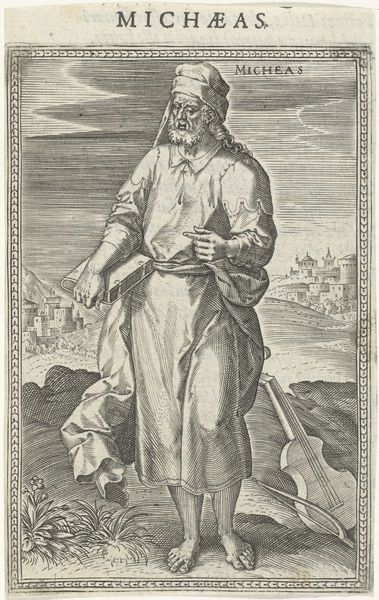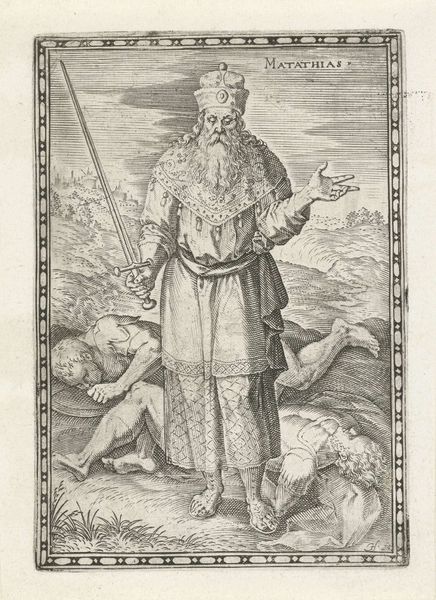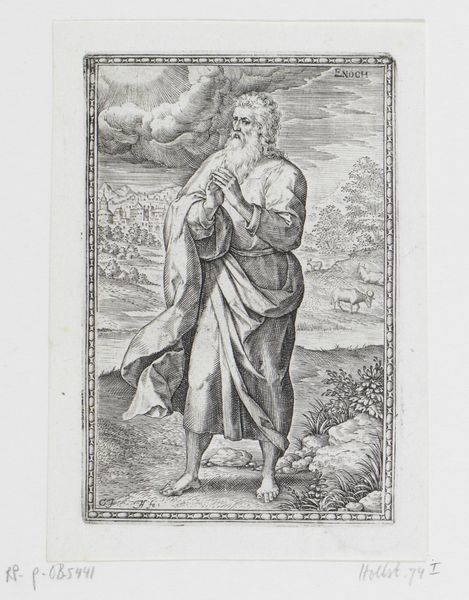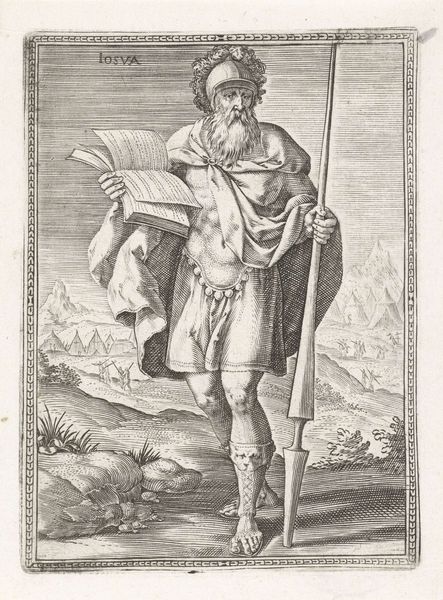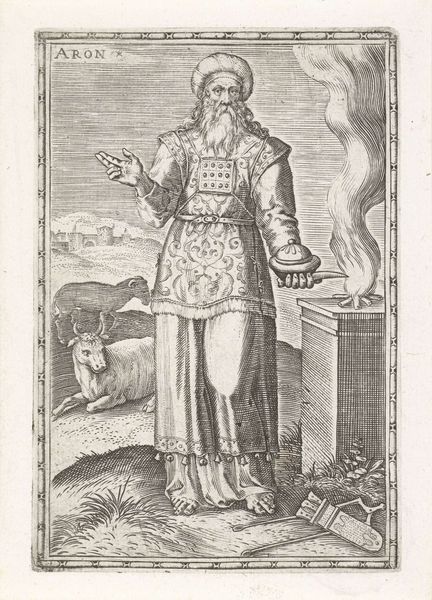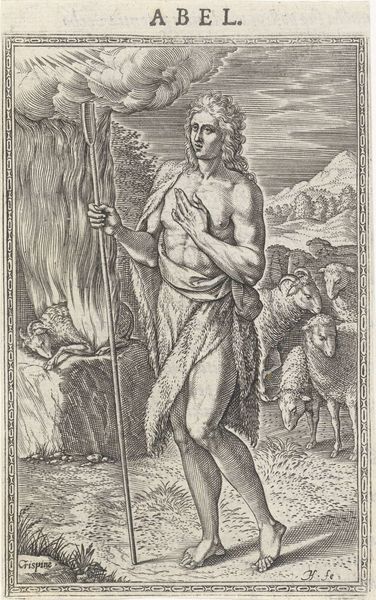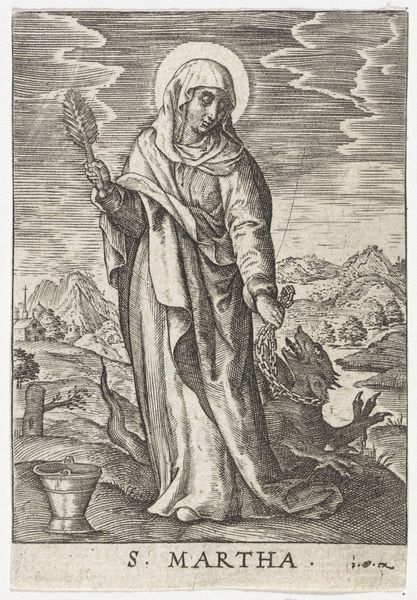
drawing, print, engraving
#
drawing
#
narrative-art
# print
#
pen illustration
#
pencil sketch
#
old engraving style
#
mannerism
#
figuration
#
pen-ink sketch
#
line
#
pen work
#
history-painting
#
engraving
Dimensions: height 114 mm, width 83 mm
Copyright: Rijks Museum: Open Domain
Editor: Here we have "Moses with the Tablets of the Law," a print made around 1575 by Johann Sadeler I, housed in the Rijksmuseum. The stark black and white and the level of detail are quite striking. The figure of Moses looms large, almost monumental. What do you see in this piece from a historical point of view? Curator: Considering this engraving through a historical lens, the public role of such images becomes central. In the late 16th century, prints were a crucial medium for disseminating religious narratives. This image served as a visual reinforcement of religious doctrine, particularly the Ten Commandments, at a time of religious upheaval and the rise of Protestantism. Notice the Latin text. Who do you think was the target audience? Editor: Perhaps an educated elite, those who could read Latin and interpret the allegorical elements? Curator: Precisely. The visual language and textual inclusion indicate an intended audience within specific social and intellectual circles. How might the Mannerist style, with its elongated figures and dynamic composition, affect its reception? Editor: It almost creates a sense of drama and emotional intensity, which probably served to emphasize the importance of the commandments. It's not just a list, it's a pronouncement. Curator: Exactly. The political dimensions are subtler but present. By visually reinforcing the established moral order, prints like this subtly legitimized existing power structures within society. Considering all these aspects gives us a far deeper understanding of this print's role in its historical moment. Editor: That's a fascinating perspective. I hadn't considered how something seemingly simple could be so interwoven with the socio-political landscape. Curator: Analyzing art with a historical lens is critical to gaining an insight that otherwise would go unoticed, wouldn't you agree?
Comments
No comments
Be the first to comment and join the conversation on the ultimate creative platform.
